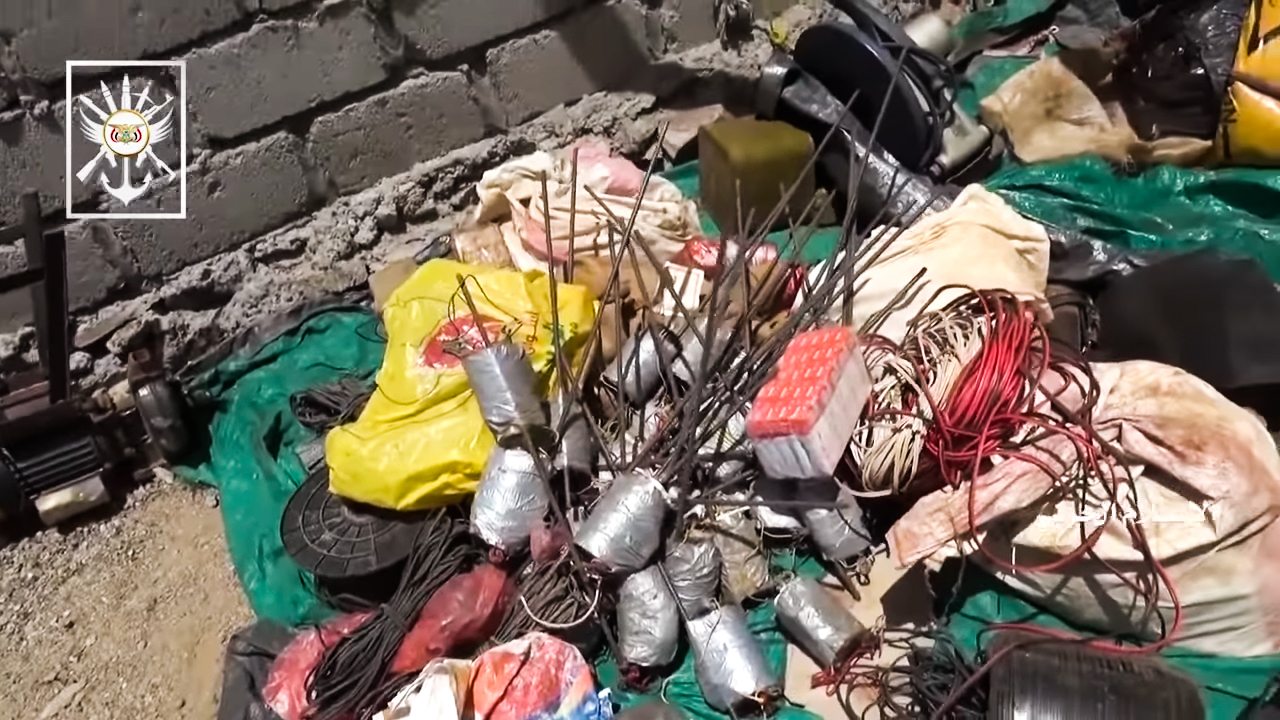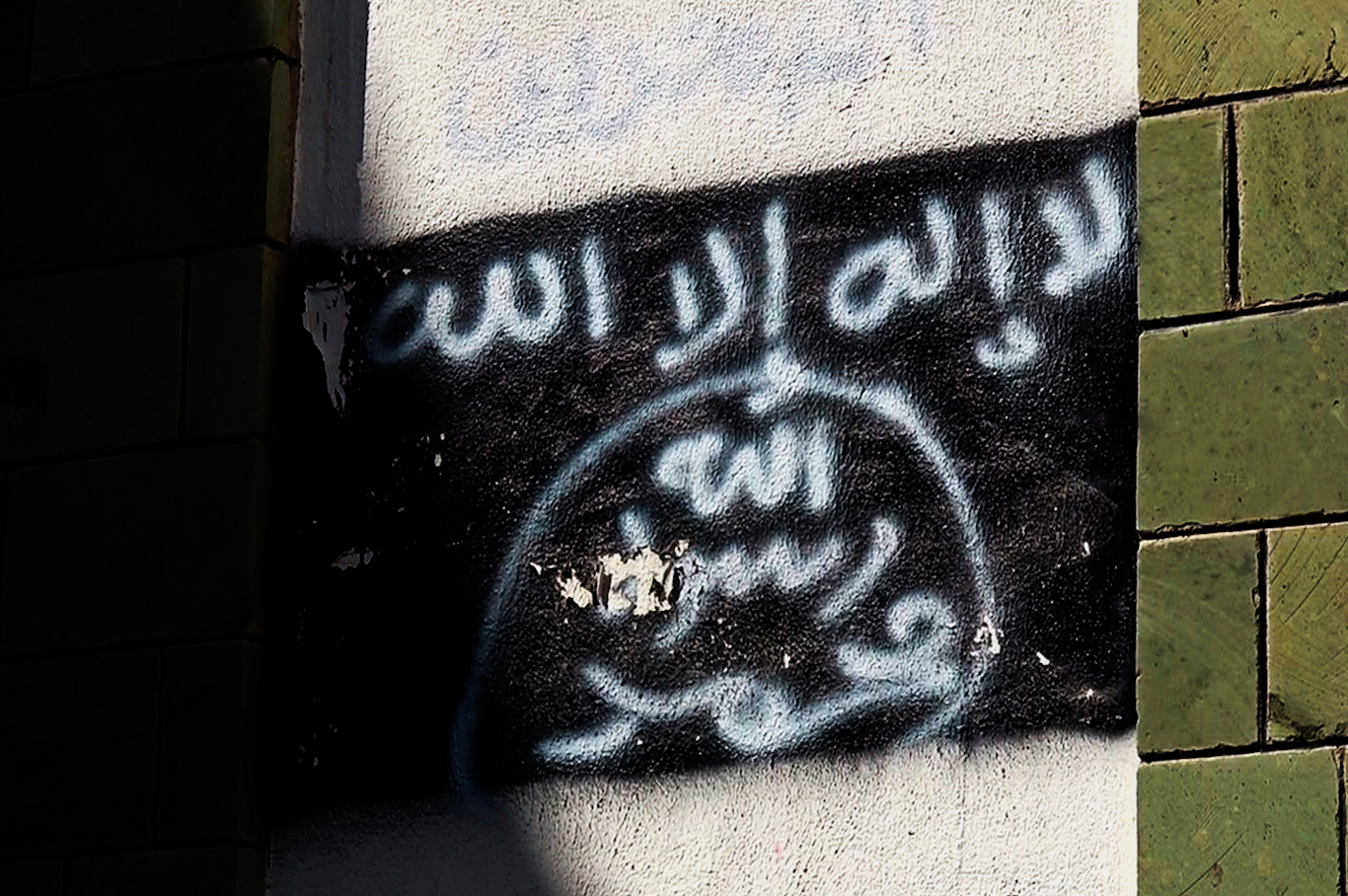AL-BAYDA,YEMEN– Yemen may be set to repeat the horrific events of 2014, when fighters with the so-called Islamic State of Iraq and Greater Syria (ISIS) swept across Iraq and Syria, holding an area extending from western Iraq to eastern Syria and carrying out mass executions, kidnapping, and torture. Today, the same scenario is taking shape in the torn-war country of Yemen where the group had preparations to sweep the Yemeni provinces of al-Bayda, Dhamar, and Sana’a in a move that many believe is aimed at changing the equation on the ground after a failed Saudi-led coalition military incursion in the country.
A national coalition of fighters led by Ansar Allah recently defeated the largest den of IS and al-Qaeda militants seen in the Arabian Peninsula in central Yemen. In the week-long operation, thought to the be the largest of its kind since the war in Yemen began, the terrorist groups left behind dozens of documents, including maps, passports, and videos, some of which were viewed by MintPress. Confession of hundreds of captured IS and al-Qaeda fighters, including many from western countries, revealed that the groups were receiving support from Saudi Arabia and wanted to repeat an “Iraqi Mousel scenario” in Yemen by the end of 2020.
The Ansar Allah-led army, supported by local al-Bayda tribesmen, successfully swept the Qeifah, Gurashyah, and Walled Rabie districts in al-Bayda province where IS and al-Qaeda fighters controlled an area estimated at 1,000 square kilometers. More than 1,000 foreign and local fighters, including high-ranking leaders, were killed or captured in the operation. Many of the groups’ leaders were involved in the killings and executions of civilians in Syria and Iraq and at least 200 surrendered themself to Ansar Allah on the condition that their identities not be revealed to their home countries.
New scenes of the Massive sweep operation against AQAP and ISIS in Al-Bayda’ 26-08-2020#YemenWrath pic.twitter.com/VY340Uz0Cg
— البأس اليماني (@YeWrath) August 26, 2020
Salem Hassen, who appears no older than 30 years old, is one of the dozens of foreign leaders captured in the operation. Hassen is from Saudi Arabia, particularly from Breidah al-Qassim, located at the heart of the Kingdom. Other fighters hailed from Afghanistan, Pakistan, and Syria. While most surrendered themselves, some wore explosive belts and blew themselves up before they could be apprehended, including the man thought to be the head of IS in Yemen, Radwan Muhammad Hussein Qanan, known as Abu Al-Walid Al-Adani. Other notable high-level figures in the organization were also killed in the operation, including Suleiman al-Adani, who was in charge of manufacturing workshops for explosive belts; Book Security Officer, Muin Nasir Al-Maflahi and Hamed Abdo Anam, known as “Khattab al-Ibbi,” in charge of relations with IS. Notably, many of the fighters captured in the operation hailed from countries far from Yemen, including from Europe.
What the Yemeni war media has shown, and what the world should know, is the nationality of the takfirs and those who want to spread terrorism in Yemen which is the countries of aggression that support them by their air raids against the Yemeni army and popular committees . pic.twitter.com/jTz1CqrPGU
— Princess Of Yemen
بديل (@princess_yMn20) August 27, 2020
After the defeat of al-Qaeda in Afghanistan, the districts of Qeifah and Wald Rabi became al-Qaeda strongholds, and by 2018, had turned into the headquarters of IS in Yemen, much like Mosul in Iraq and al-Raqqah in Syria. From there, high-ranking leaders of both groups planned their largest operations inside of Yemen, and around the world. Yemeni Abu Mohammed al- Adeni, who had been captured by the Yemen army while he was trying to escape to Dhamar province, was behind the planning and execution of two suicide attacks against the al-Badr and al-Hashoosh mosques in 2015 that killed more than 150 and injured more than 1,000 as well as the 2012 Sana’a bombing against Yemeni Army soldiers preparing for the annual Unity Day military parade
The group is believed to have had conducted 320 attacks in Yemen and throughout the world between January 2015 and May 2020. At least 190 of the attacks in Yemen involved the detonation of explosives. Twenty-seven assassinations were also attempted during the period, 11 of which failed. Terrorist attacks all over the world, in cities, as far-ranging as New York, London, Paris, Sydney Brussels, were planned from the new headquarter according to videos that left behind in their well-fortified hideouts.
These districts were known to the United States as strongholds to IS and al-Qaeda. On January 29, 2020, the Emir of AQAP, Qasim al-Raymi, was killed by a U.S. airstrike while traveling in a car with another senior AQAP leader, Abu Al-Baraa al-Ibby, in the Yakla area of Wald Rabi’ District, al-Bayda. However, no airstrikes have yet been recorded against the leader of IS in Yemen.
IS and al-Qaeda in Yemen: an uneasy alliance
At first, IS and al-Qaeda in Yemen had an uneasy alliance and were working in unison, unlike in Syria and Iraq where they battled it out for territory and influence. This was due to an agreement reached through Saudi mediation that was implemented in 2018. During that time, the groups established additional military bases in remote areas; six IS camps, including Shaeb Aleshr, Alnajdu, Shaear Alzel, Ghajaman, Altamasih military camps, and eight al-Qaeda bases. More than 13,000 fighters were conducting maneuvers and daily training using live ammunition in camps where black flags were flying over at a time when U.S. drones were almost constantly spotted over the skies of al-Bayda.

A still from video released by Ansar Allah shows a fighter standing over a collection of foreign ID cards recovered during the raid on al-Badya
By 2020, the groups, now supported by Saudi Arabia, had prepared a four-pronged plan to wrest control of al-Bayda due to its strategic location in central Yemen. Al-Bayda is known as the gate to eight provinces; Sana’a, Dhamar, Ibb, al-Dhale, Lahij, Abyan, Marib, Shabwa. The first axis was to advance through the areas adjacent to Shabwa from the Beihan district with the aim of gaining complete control of the Nati’ and Noman directorates. Many parts of two districts had been under the control of al-Qaeda since 2015 when the Saudi war on Yemen began in earnest.
The second axis marched towards the directorates adjacent to Dhamar and Bani Dhabian districts in the Kholan region, south of Sana’a through the areas of Qaifa, then on to Sana’a city.
The third axis moved towards the areas adjacent to the provinces of Lahij and Abyan to control Makeras and the areas south of al-Bayda under the leadership of Saleh al-Shajri, commander of the so-called al-Amajid Brigade.
The fourth axis was to take the area adjacent to Marib in order to cut the line between Rada’a and al-Bayda and in turn, cut off Yemeni forces completely.
The documents recovered from Ansar-Allah’s operation indicated that the groups were planning an increase in attacks, using explosive devices to target the army, security services, and community leaders opposed to the Saudi war in al-Bayda. Other documents belonging to the groups acknowledge that the security services had foiled four suicide car bombings and that eight had failed to blow up in the al-Yasbel area of al-Wahbia district in al-Bayda.

A still from video released by Ansar Allah shows a pile of IEDs and bomb making material recovered during the raid on al-Badya
Documents show that those plans were carried out in full coordination with Saudi Arabia and leaders of Saudi-backed militant groups. Dozens of meetings were held between both sides in Marib and al-Bayda. Many Saudi officers and some local leaders visited Qiefah and Yakla to oversee the disbursement of funds and the storage of arms shipments provided by Saudi forces, including 50-caliber sniper rifles that were placed under the custody of Pakistani nationals.
Under the eye of American drones
Since 2015, the Saudi-led Coalition has increased support to IS and al-Qaeda, who now roam Yemen’s battlefields equipped with U.S. made-weapons. According to documents recovered from the operation, coalition support for the groups was led by Ali Muhsein and Tawfiq al-Qayyz. The duo acted as liaisons to the groups, overseeing operations to airdrop food and weapons to them, and in a more recent operation, to conduct more than 95 Saudi airstrikes to prevent the Ansar Allah from advancing on their barracks and bases in Qifa and Ikla.
Many international organizations, particularly the U.S. government-run United States Agency for International Development (USAID), have been accused of supporting al-Qaeda and IS fighters in Yemen. Documents recovered from during the raid as well as during previous raids revealed weapons caches lifted by al-Qaeda and IS emblazoned with the USAID flag in enclaves that were particularly difficult to access. That support apparently increased in frequency in the first months of 2018.
Abed al-Thour, a Yemeni military strategist and expert with extensive knowledge of terrorist groups believes it is unlikely that the United States was unaware of the groups proliferation in Yemen. “It is difficult to believe that the existence of so many camps, fighters, and weapons in a particular geographical area were out of the eye of the drones and spy satellites of the United States,” said al-Thour. Another military expert told MintPress that “it was likely that the United States turned a blind eye to IS camps to let the groups create a new reality along the lines of events in Iraq and Syria to defeat the Houthis, at best.”

The black al-Qaeda flag is sprayed on the wall of a damaged school in Taiz, Yemen, Oct. 16, 2017. Photo | AP
For his part, Houthi spokesman Brigadier General Yahya Saree said that IS and al-Qaeda had coordinated with Arab and Western intelligence agencies and received financial and military support from Saudi Arabia, the United States, and the United Arab Emirates. He mentioned that the Saudi-led coalition conducted dozens of airstrikes in an attempt to hinder Ansar Allah (the political wing of the Houthis) forces from advancing toward IS and al-Qaeda positions.
It is easy to understand the Saudi support for IS and al-Qaeda, as they share a similar ideology and same enemy, but what is incomprehensible is the support, or blind eye, of the United States and other countries to IS and al-Qaeda in Yemen. Many officials in Sana’a said the U.S. plays with a fire that not only burns Yemenis but also burns many innocent people around the world, including in the United States.
In fact, Ansar Allah’s operation not only stopped the repetition of a scenario like that seen in Mosul and many areas in Syria, but it has also hindered the ability of IS and al-Qaeda to carry out planned attacks on Western nations, including in Europe and the United States, and in some Arab countries as retaliation attacks to “ fight their country in Iraq and Syria” according to their documents that showed contacts between members of IS with individuals in these countries.
Feature photo | A silhouette of tribesmen loyal to Houthi rebels raise their weapons as they chant slogans during a gathering against the agreement to establish diplomatic relations between Israel and the United Arab Emirates in Sanaa, Yemen, Aug. 22, 2020. Hani Mohammed | AP
Ahmed AbdulKareem is a Yemeni journalist. He covers the war in Yemen for MintPress News as well as local Yemeni media.
The post Massive Ansar Allah Operation in Central Yemen Reveals Alliance Between al-Qaeda and Islamic State appeared first on MintPress News.
